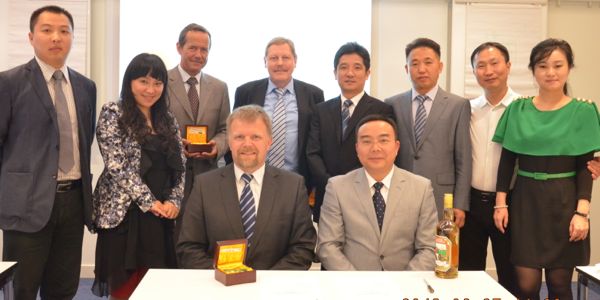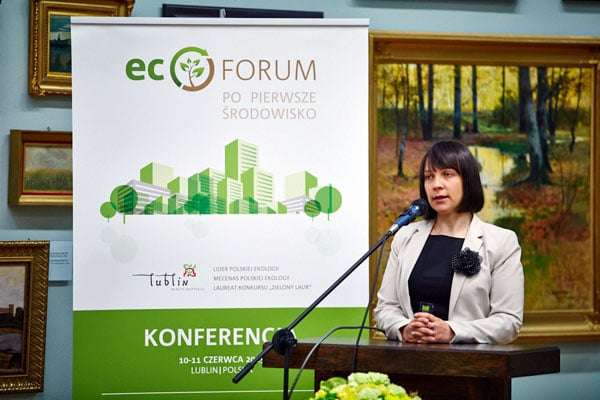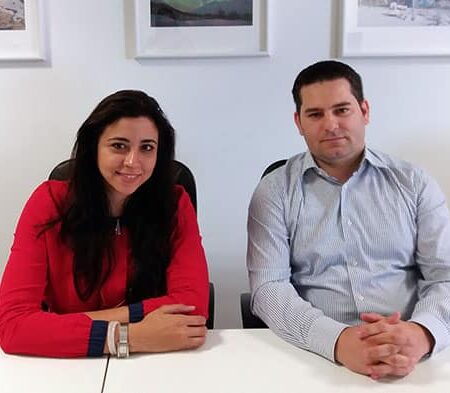The challenge of keeping pace with rapid population growth in the Gulf region is creating constant bottlenecks, especially in the infrastructure and wastewater management sectors. Member countries of the Gulf Cooperation Council (GCC) are addressing the challenge with massive development plans projecting steady population and economic growth until 2030. Since the discovery of black gold in the Gulf region, all GCC countries have experienced rapid population and economic growth. This constant growth has created difficulties in most sectors related to infrastructure and city planning. While some are evident, like rush-hour congestion on the streets of major GCC cities, others are not directly visible to the average tourist or outside observer.

One prime example is the wastewater sector.
Unless you live near a sewage treatment plant (STP) and have seen the constant procession of trucks bringing raw sewage to the plant from various locations, you are probably unaware that much of the Gulf region lacks adequate sewage collection infrastructure. In addition, many of the plants constantly operate over capacity or are simply outdated, leading to severe odor problems. Depending on the wind direction, this can be a real issue for nearby communities.
The emirate of Abu Dhabi offers a great example of this problem and how it is being tackled.
The emirate’s first STP was built in 1973 with a capacity of only 4,545 m3/day. Owing to rapid growth, just nine years later a new plant was completed in Mafraq with a capacity of 100,000 m3/day. The capacity of the Mafraq plant was tripled 15 years later, in 1997, to 320,000 m3/day, sufficient to serve a population of 900,000. Every two years until 2003, the plant was upgraded to cope with rising demand. In addition, Abu Dhabi has built a plant for the local community in the oasis of Al Ain. Around 2008, the government of Abu Dhabi embarked on an ambitious project to prepare the emirate’s sewage infrastructure for projected population growth to more than six million by 2030. This project included the Strategic Tunnel Enhancement Program (STEP) and four STPs with combined capacity in excess of 800,000 m3/day. The STPs have been built under build-operate-transfer (BOT) contracts, a form of public-private partnership. Two of the plants are operated by a consortium of Veolia/Bessix and the local government, and the other two by a consortium of Kuwait-based Kharafi National and the local government. The problem of matching supply to demand, evident in all GCC countries, was well highlighted by Chowdhury of Bluefield Research in 2013. While the collection bottleneck in Abu Dhabi will be eliminated when the STEP project becomes fully operational by 2019, in other emirates and GCC countries, construction projects have only just started or are expected to go out to tender in the near future. 
Source: Chowdhury 2013, FAO, Economic and Social Commision for Western Asia, Bluefield Research
The concept used in Abu Dhabi – constructing a backbone tunnel for the main sewage pipeline and locating the STP outside the city – has been adopted by several other emirates and countries in the GCC.
Dubai, for instance, just started work on two sewage tunnels, as well as upgrading existing STPs and building a new STP in Jebel Ali. The new STP, which is scheduled to be operational by 2019, is projected to cope with demand until 2025, by which time an extension of the plant is planned. Qatar has started work on its Inner Doha Re-sewerage Implementation Strategy (IDRIS), but progress was halted in early 2016. The initial concept included one gigantic deep tunnel for sewage collection. It is not clear when work on the main collection tunnel will resume, but it is likely that other parts of the massive IDRIS program will get under way in 2017, including some STPs and infrastructure projects. Kuwait invited tenders for a new STP in Umm Al Haymann in 2016, including some work on the sewage collection infrastructure. Massive changes are taking place at the Oman water authority, which is likely to delay the issuing of the tender invitations expected in 2017. However, there are several projects in the pipeline, and the government plans to have all citizens of Oman connected to sewage infrastructure by 2020. Meanwhile, in Saudi Arabia, the region’s biggest market, several projects are under way. A huge series of projects in the wastewater sector, encompassing treatment facilities and especially collection infrastructure, is expected to go out to tender in 2017. “In summary, wastewater infrastructure in the GCC countries is undergoing massive development at a rapid pace. However, the concept of a backbone tunnel feeding two or three treatment plants outside the cities might not be the ultimate solution, even though in many locations it is either planned or implemented. The halt in the IDRIS project could indicate a change in thinking. We must wait and see whether the project continues along the same lines, or whether the local government in Qatar aims for a decentralized solution. Oman is also an example of a decentralized network, given the population distribution,” says Benedikt Pilscheur, Regional Director-Gulf Region at Green Business Norway. To conclude, we can say that the wastewater market in the Gulf region looks extremely attractive for the next few years. Drawbacks related to the local framework are heavily outweighed by market potential. Although a lot of contracts have already been awarded, or are about to be, there is still a very attractive series of projects in the pipeline. Given that the governments of the various countries tend to award different project packages to different bidders, the outlook for new players on the ground appears positive.
- 20170209 115422 2
- 20170209 115541 2
Benedikt Pilscheur, Regional Director–Gulf Region, Green Business Norway, and Huda El Sheikh, Business Advisor from Nordic Innovation Hub, in Masdar City, Abu Dhabi. Article contact info: Benedikt Pilscheur, Regional Director-Gulf Region, Green Business Norway



























































































